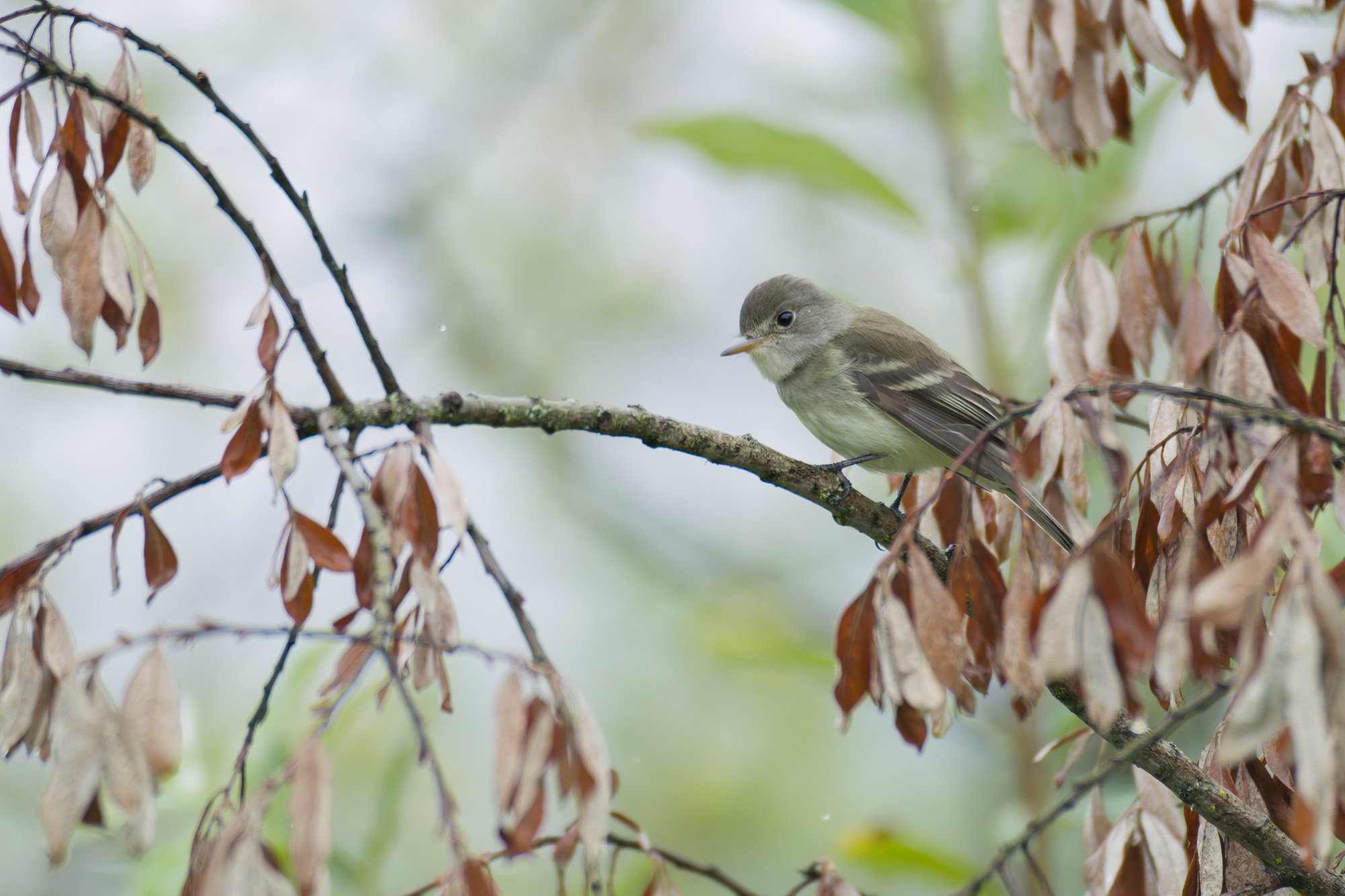
As the climate changes, living things must adapt to new environmental conditions in one of two ways – either geographically or genetically. While it’s relatively simple for scientists to track and record a species’ geographic movements, proving their genetic adaptation over time can be much more difficult.
A new study led by Colorado State University researchers in Nature Climate Change is one of the first to document climate adaptation at the genomic level in a wild population. Specifically, the Southwestern Willow Flycatcher – an endangered migratory bird – has shown an increase in genetic variation associated with tolerance to wetter and more humid environmental conditions.
Sheela Turbek, a postdoctoral researcher in CSU’s Department of Biology, led this study that sequenced the genomes of the Willow Flycatcher over a 100-plus year period, comparing DNA from museum specimens from the late 1800s to modern samples taken today.
The research findings suggest that increases in genetic variation in the San Diego, California Willow Flycatcher population is allowing them to better adapt to changing climates, and that these genetic changes began as long ago as the late 1800s.
Climate adaptation on a genetic level
Turbek hypothesized that the changing climate in San Diego, California, where weather conditions have gotten wetter and more humid over time, would lead to genetic shifts in wild populations.
“We used over 200 contemporary samples from the Willow Flycatcher to scan the genetic material for specific regions of the genome associated with important environmental variables,” said Turbek. “This includes things like monthly precipitation and monthly maximum temperature. Once we identified the regions of the DNA we think are involved in climate adaptation, we extracted the genetic information from those regions in both our historical and our modern San Diego samples.”
Her groundbreaking work revealed that there has been an increase in genetic variation in Willow Flycatchers from past to present, and that genetic regions associated with humidity and precipitation in Willow Flycatchers have both shifted in a direction that is consistent with climate adaptation.
Proving genetic adaptation over time
Turbek, who is a part of Kristen Ruegg’s lab at CSU, picked up this research after Ruegg and collaborators had been working on a similar project for around 10 years. The technology needed to sequence whole genomes advanced significantly over the 2010s, making this work possible today.
Turbek focused on the Southwestern Willow Flycatcher because of its endangered status. Ruegg’s foundation of preliminary research showed the birds had locally adapted to different climate conditions across space.
“The Willow Flycatcher is made up of four different subspecies, and the subspecies in the southwest has faced really precipitous population declines and was listed as federally endangered in 1995,” said Turbek. “So, there’s a lot of interest from government agencies to effectively manage this subspecies and save it from climate induced extinction, which is something that Kristen has demonstrated it could potentially suffer from in the future.”
To prove genetic adaptation over time is much more complicated.
Decades-old samples often contain degraded, contaminated or low-yield DNA, which is why, until now, it has been difficult to prove genetic adaptation to an appropriate degree of certainty.
“Museums will send us a little clipping from a toe pad that often has really low DNA concentrations so it’s hard to acquire enough reads of the DNA to have a good idea of what the genetic code looks like,” said Turbek.
After the years-long effort of sequencing the historical genome, and comparing the historical results to modern samples, the researchers determined that the Willow Flycatcher had seen an increase in genetic variation over time.
“We think that it was actually mixing or gene flow into the population from neighboring populations that helped recover the gene pool of the Willow Flycatchers in the San Diego area,” said Ruegg.
Validating predictions of climate change effects
Turbek and Ruegg are excited to be able to validate scientists’ predictions of how some species will adapt to climate change.
“Human-induced climate change is really having a drastic effect on the reproductive activities of many species, and it is going to drive a lot of organisms to the brink of extinction,” said Turbek. “So, the fact that we can document this amount of adaptation over a century-long time scale is somewhat encouraging in that these birds seem to be responding to the amount of climate change that has already occurred. It can help us better predict what’s going to happen in the future, and how species might respond.”
Other essential collaborators include: Christen Bossu, Christine Rayne, Christian Gruppi, Barbara Kus, Mary Whitfield, Thomas Smith, Eben Paxton, Rachael Bay and Kristen Ruegg.